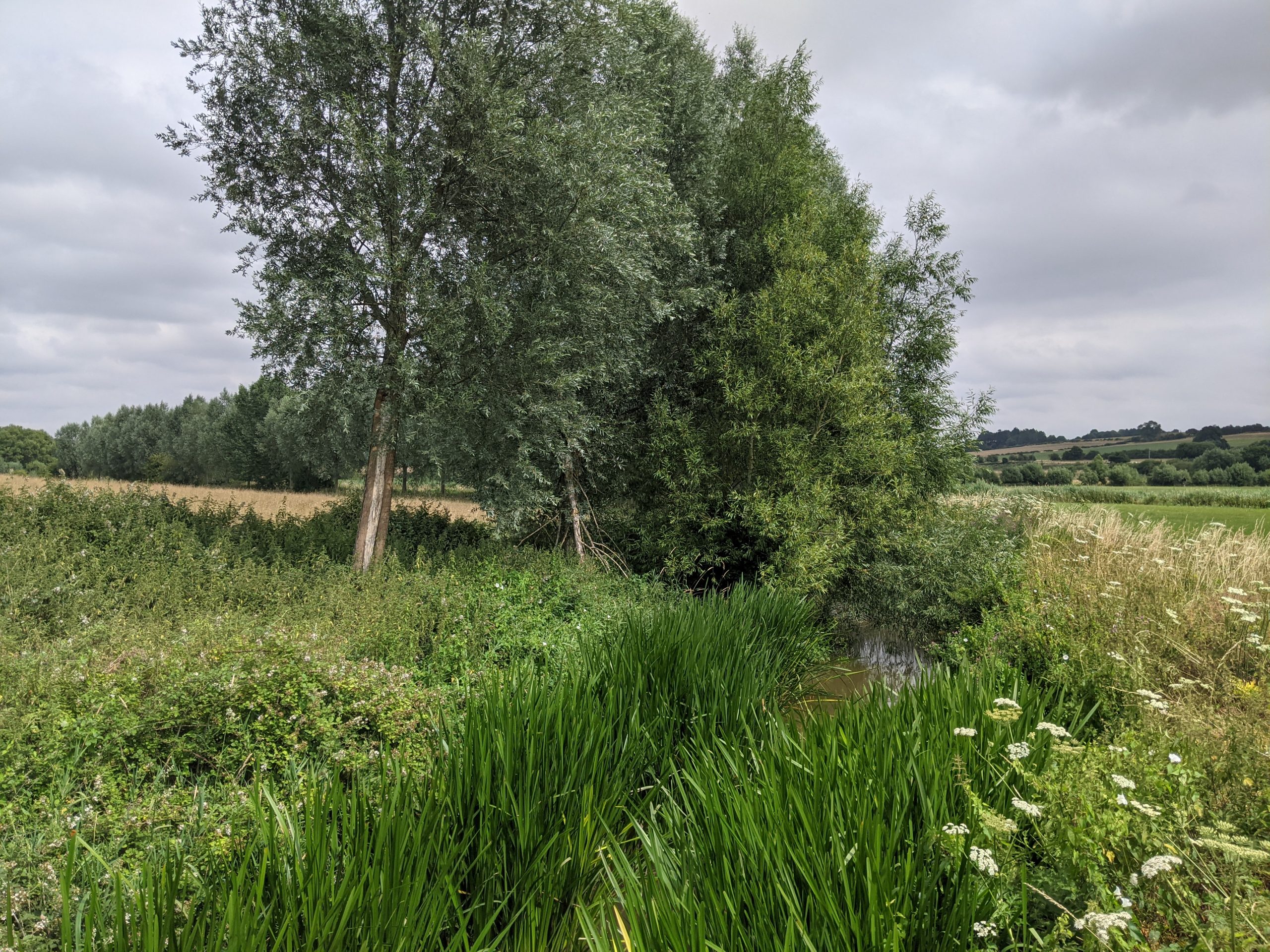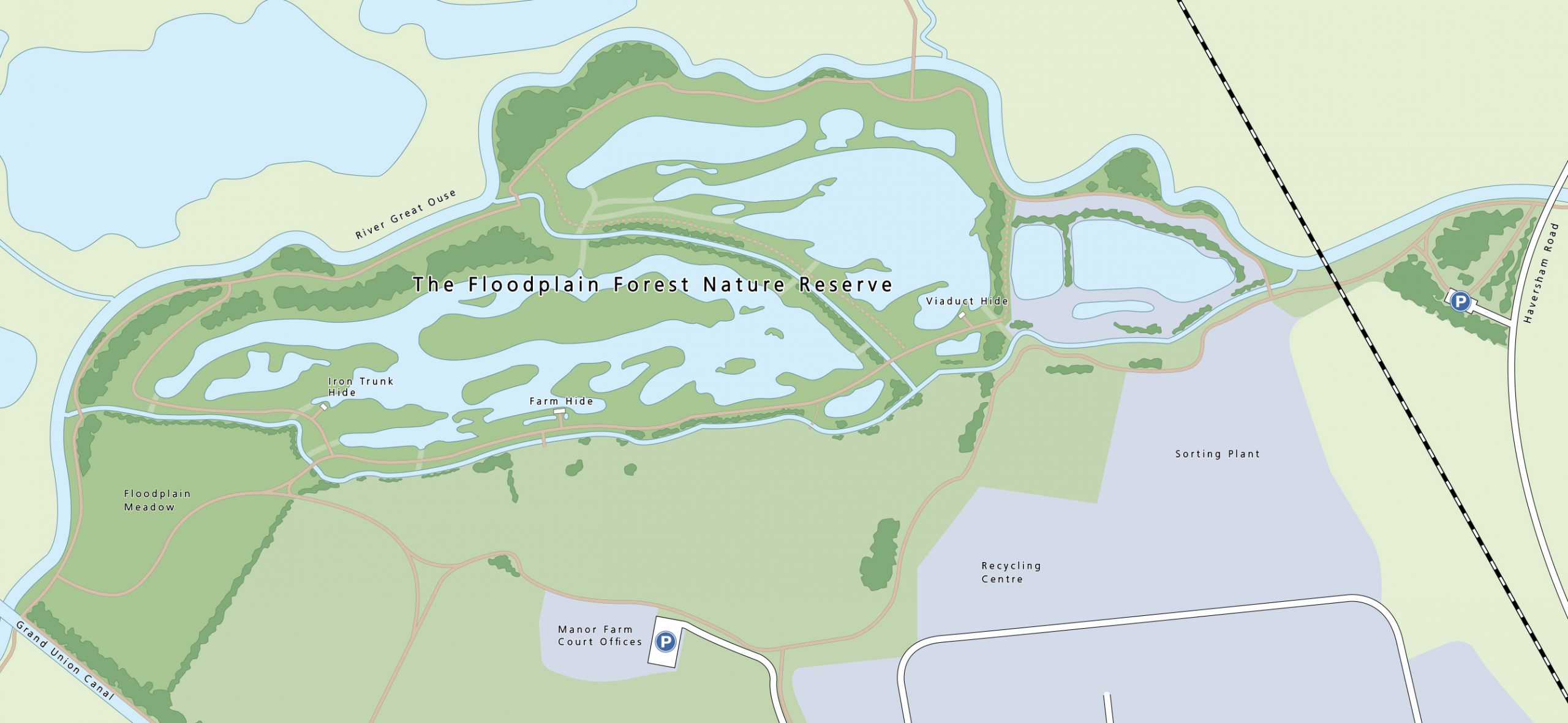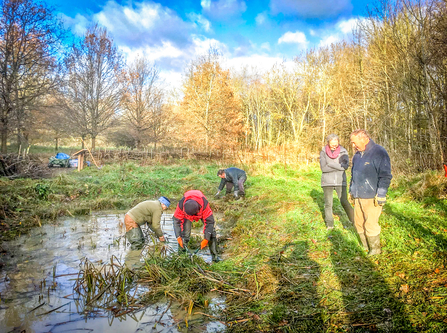Key Opportunity 2: Restoring Cherwell’s blue corridors
River Cherwell corridor and riverside habitats

Purpose
Reduce flood risk, capture carbon and improve habitats.
Description
As a nature-based solution (NBS) and natural flood management (NFM) technique river corridor and wetland restoration can provide greater resilience to the effects of climate change.
The multiple benefits provided by this tool include reducing flood risk (by slowing the flow of water through wetlands), filtering water and capturing carbon. It can also improve and connect the habitat for a wide variety of species from plants to insects, amphibians, reptiles, fish, birds and mammals.
Wetland creation also provides opportunities for encouraging recreation and providing valuable access to natural landscapes and waterscapes. Techniques that encourage minimal intervention and self-recovery of habitats by natural processes should be prioritised, rather than artificial structures or modifications.
Why is this important for Cherwell?
In Cherwell, climate-related changes in weather patterns are significant concerns – particularly fluvial flooding (from rivers).
As a result, we need to rethink the management of the District’s riverside areas to reduce flood risk and improve biodiversity.
Cherwell is an area where agriculture is the dominant land-use in areas surrounding the major settlements. However the growth and intensification of farming has not been matched by an equivalent investment in water and river corridor management.
As a result, some of the District’s rivers suffer from poor water quality – with only 1 of 35 water bodies in Cherwell achieving ‘good’ ecological status. Wetlands offer an opportunity to capture pollutants and return them to the soil.
The natural beauty of Cherwell’s rivers is also an important part of local life and sense of place. Protecting and enhancing river corridors will help to reconnect towns and villages to their blue corridors. Wildlife and ecological education opportunities should be taken along Cherwell’s blue corridors, with interpretation features and information boards to support their use as an educational resource.
Case studies
Map of Milton Keynes Floodplain Forest

The Milton Keynes Floodplain Forest Nature Reserve is a good example of a strategic-scale initiative to restore a floodplain and connect it to its river – in this case in the floodplain of the Ouse Valley. The objective was to create multiple channels and a mosaic of wet woodland, fen, reedbed, wet grassland, marsh and pool habitats. It also includes an educational park for the settlement of Milton Keynes, with full access and interpretation boards.
The project took place on a site formerly quarried for sand and gravel until 2014, which was redeveloped as a nature reserve. It is designed to quickly fill up with floodwater when the River Great Ouse floods – this dynamic water system makes the site appealing to birdlife, including wetland birds and invertebrates.
The River Restoration Centre (RRC) also provides a wide range of river restoration case studies at various scales and levels of ambition.
This includes a project in Cherwell itself under the ‘Wild Banbury’ initiative. The project restored connectivity and habitat within Banbury’s Spiceball Park – including “reprofiling” of the river’s banks, introduction of wildflowers and bridges and benches for recreational use.
Volunteers at Spiceball Park (Image source: Wild Banbury)

Delivery guidance
A good starting point for identifying priority interventions along the Cherwell River Corridor are the priority actions for 2022-2028 of the Cherwell and Ray Catchment Partnership. It identifies several river restoration actions based on survey work, which should be key targets for investment.
In the short to mid-term, riparian planting could be undertaken along Cherwell’s blue corridors, with minimal infrastructural interventions. The exploration and removal of physical structures within the river and canal could follow in the mid to long-term.
Key delivery partners
- The Wildfowl and Wetlands Trust (WWT)
- The Rivers Trust
- The River Restoration Centre/Catchment Partnership Action Fund
- Dam Removal Europe (which provides a practitioner’s toolkit)
- The RSPB
- Berks, Bucks & Oxon Wildlife Trust
- Wild Oxfordshire
- Canal & River Trust
- Local and national government
- Local wildlife groups
- Parish/Town Councils
Potential delivery mechanisms
- Grant funding.
- Developer contributions (including Section 106 and BNG).
- Environment Agency Water Environment Grants.
- Sustainable private sector investment in nature-based solutions – such as at the pilot project at the Wyre Catchment in Lancashire.